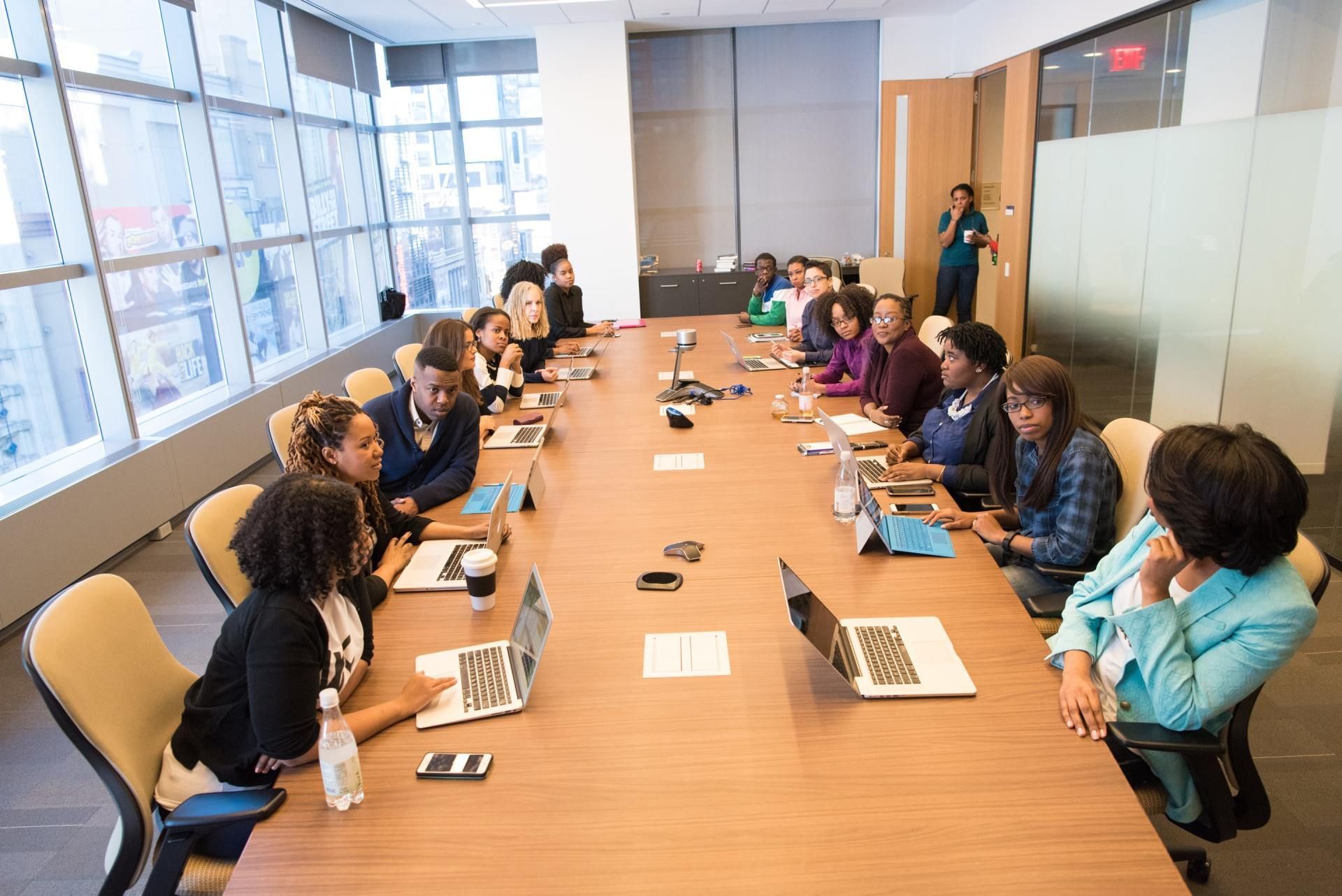Article
How do I stop dysfunctional behavior in team meetings?
Getting the Team to Decide How It Wants to Work Together

It would be great if you could put together a group of individuals, call it a “team,” and have it function in a cohesive and productive manner. This actually happens occasionally, but much more often, the different backgrounds, work styles, and variations in social competence lead to less happy results.
Almost always, team members have different histories and different types of business backgrounds ranging from long experience at one company, to no experience at all. Often, they’ve come from several different companies, which gives them diverse models of what is the best way to do things. These result in differing expectations and can lead to friction and conflict. If you don’t consciously and intentionally establish norms of behavior, what evolves will unfold unconsciously, and team behavior may turn into an out-of-control weed rather than a beautiful bonsai tree!
Establish rules of the road.
Often what’s lacking is a set of rules of engagement – a clear agreement among team members about what is acceptable behavior. These are agreements about how they want to communicate with each other and work together to boost efficiency and team effectiveness.
Rules of engagement may include: how to conduct meetings (setting agendas, arriving on time etc.), who should attend, how the team makes decisions, being fully present and attentive, coordinating hand-offs, reviewing work products, resolving conflicts, sharing information, honoring confidential conversations, having open and honest dialogue, following up on commitments and so on. Without clear parameters to serve as a framework, what generally happens is that meetings may or may not start on time and end on time, and are undisciplined, with some people dominating, lots of interrupting, unproductive arguments and some members withdrawing and not participating. If participants don’t take meeting protocol and meeting times seriously, do they also have a loose attitude about deadlines and launch dates? This is why it is important for the leader to strive to develop a culture of discipline.
Let the team decide .
To accomplish this, it’s very useful to have the team discuss and clarify how they want to work together and reach agreement on the behaviors that will guide how they interact and how they will make decisions. Defining a team’s norms, rules of engagement and core values should not be the sole product of the entrepreneur or a few co-founders, which is then mandated to the team, but rather it should be a team process.
Here are some suggestions to kickstart that discussion.
The following guidelines refer to communication in general, but apply particularly to meetings:
- Create a specific agenda for the meeting and distribute it to everyone involved.
- Reduce the potential for distractions – agree to shut off cell phones, etc.
- Work collaboratively to solve problems. Actively support and cooperate with all team members. Share what you know. Be available for teammates when they need help, and if you see someone needs help, offer support without being asked. When you need support, a listening ear to run ideas by, or help with a problem you’re struggling with, ask for it.
- Seek to understand before being understood.
- Don’t dominate meetings just because you can. Actively seek out the views and ideas of all team members.
- Provide timely feedback and accept all feedback as valid for consideration.
- Try to be aware of the needs, motivations, feelings and skills of other team members.
- Your team members have a wealth of experience, expertise, and insight. That’s why you recruited them. Listen carefully and be open to their ideas.. Avoid interrupting. Let one person speak at a time. Share the airtime equably. Discourage side conversations.
- Encourage team members to speak up when the conversation gets off-track or goes in circles; otherwise the leader should bring the discussion back to the topic at hand.
- Separate issues from people and focus on problems and solutions rather than personalities.
- Speak honestly and openly.
- Give your teammates positive reinforcement. Express appreciation for what people have accomplished. Celebrate achievements and milestones.
- Make critical decisions by following a disciplined and systematic process to reduce bias and reactivity. Make the environment safe enough that hidden assumptions can be surfaced and challenged, and biases uncovered.
- Everyone has permission to call out violations of these rules.
Team members have a responsibility to hold each other accountable. For example, establish deadlines and timeframes for actions or deliverables – and stick to them. Visionary Evangelists like to talk about ideas; Relationship Builders want us to be nice to each other and share our feelings. Managers of Execution excel at allocating tasks and responsibilities. They will push for closure on deadlines and deliverables.
The “Ideal Team” Exercise
This is a helpful and enjoyable exercise. It not only helps teams operate more effectively, but it also helps team members get to know each other better, and thus builds bonds and strengthens group coherence.
- Ask each team member to bring to mind the best team they’ve ever been on and make a list of the characteristics that made that team special.
- Then have each person report to the group their #1 point – for example that the people on the team genuinely cared about each other, listened to what everyone had to say, or trusted each other and describe what it meant to them personally, telling a brief anecdote illustrating how that showed up.
- When everyone has had a chance to present their top point, continue sharing the other characteristics of their ideal team. Soon you will begin to see repeats, and this will be an indication that it’s time to finalize the list.
- At this point, you can compile a master list of positive characteristics that would comprise an ideal team. (Most teams generate between 12 and 20 characteristics.)
- Then ask them to rate their current team on those characteristics. The gap between the ideal and the actual immediately makes it clear where the team is not functioning well, and what needs to be changed. That leads naturally to a discussion about how the team members want to behave together.
- This can help your team waste less time, have better meetings, and be more effective.
- We worked through this process many years ago at Hagberg Consulting Group, drew up a list of principles, and created a large chart that we posted on the wall of our conference room. Members of the team were empowered to call out – live, during meetings – anyone who was not living up to one of the guidelines.
By going through this process of defining the ideal team characteristics and using this discussion to develop a list of rules of engagement, the team can police itself and members will feel empowered to point out when ineffective or sub-optimal behaviors are getting in the way of their performance, communication, problem solving, or decision making.
In other words, an effective team must monitor both its rational process and its interpersonal process in order to work most effectively together. The rational process involves, in a systematic and disciplined manner, defining problems, setting objectives, surfacing relevant facts, generating alternatives, and selecting the most viable actions. However, the interpersonal process, when team members don’t listen, interrupt each other, don’t support each other, get distracted by outside interruptions, etc., can offset the benefits of a clear rational process and have a damaging effect on team and meeting effectiveness. Establishing rules of engagement is simply a way of reducing the negative impact of some of the pitfalls and involving the entire team in working to improve its own performance. Discovering and defining the team’s norms can have a lasting positive impact on team culture and ultimately on results.
share this
Related Articles
Related Articles





